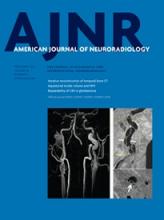We have read the article entitled “Treatment of Benign Thyroid Nodules: Comparison of Surgery with Radiofrequency Ablation” with great interest and congratulate the authors.1
Since Dupuy et al2 published the application of radiofrequency ablation to treat recurrent thyroid cancers, radiofrequency ablation has been widely used for the treatment of benign thyroid goiters. However, there are some issues that must be clarified in the present article.
What are the pathology results of the thyroidectomy group? Is there a malignant pathology report?
Incidental papillary carcinoma (IPC) of the thyroid has been accepted widely as a tumor measuring ≤1 cm. A 10% incidence of patients with IPC with multinodular goiter with benign cytology was reported in the study of Bradly et al.3 Although IPC progression is infrequent, a few cases of local spread or nodal metastases are reported in the long-term, and most patients can be effectively treated with lobectomy or thyroidectomy.4
What is the number of total thyroidectomy and lobectomy procedures? Are surgical complications different in these groups?
Unilateral thyroidectomy (lobectomy) may be preferred to retain some function of the thyroid, allowing patients to avoid life-long hormone replacement therapy. The complication rate after total thyroidectomy has been reported to be between 5% and 33%. On the other hand, postoperative complications after lobectomy are reported between 2% and 3%.5 Complications of radiofrequency ablation, total thyroidectomy, and lobectomy could be presented separately.
The authors stated, “Comparison of the two groups was done by the Wilcoxon signed rank test” in the “Statistical Methods” section.1
The Wilcoxon signed rank test is a nonparametric statistical hypothesis test used when comparing 2 related samples, matched samples, or repeated measurements on a single sample to assess whether their population mean ranks differ. Because the surgery and radiofrequency ablation groups are not related, the Wilcoxon signed rank is not a suitable method for statistics.
References
- © 2015 by American Journal of Neuroradiology







